Featured Brands
Recommended Products

The tires you choose for your mountain bike are arguably one of the most important components in your whole bike build. They are the key contact point between your bike and the ground and dictate trail grip, corner confidence, initial suspension, braking control, and rolling resistance. We've created this article to help you navigate the numerous options of tread patterns, compounds, protection and sizing for all the available tires from Maxxis.
In order to choose the correct tire for your needs, you'll want to consider your bike setup, trail conditions and terrain, and how you plan to ride your bike. Beyond that, you'll want to prioritize your needs for grip vs rolling resistance, protection vs weight, and several other factors. From XC to DH, we've broken down Maxxis's tire technology and tires to help you find the right tire for your ride. Get started by clicking the links below to learn about tire construction, casings, compounds, tread patterns and tech, or click the link to your favorite riding style to see what tires we recommend. You can also click on the features and technologies throughout the article to learn more. Let's get started!
TIRE CONSTRUCTION | PUNCTURE PROTECTION | COMPOUNDS AND TREAD | XC TIRES | | TRAIL TIRES | GRAVITY TIRES
Mountain biking is a diverse sport and mountain bikers ride a wide array of terrain and features all over the world. Some riders keep it pinned on the trail while other riders take it easy. Some like to go up and others are all about the downs. This is why choosing the right tire construction for your needs is so crucial. All bicycle tires have the same basic anatomy, and learning what each part of a tire is and how it effects performance will help you to choose the right combination for your riding needs. Scroll down to learn about each component of a tire and the tech Maxxis uses.
The function of the bead is to keep the tire in contact with the rim while the tire is inflated.
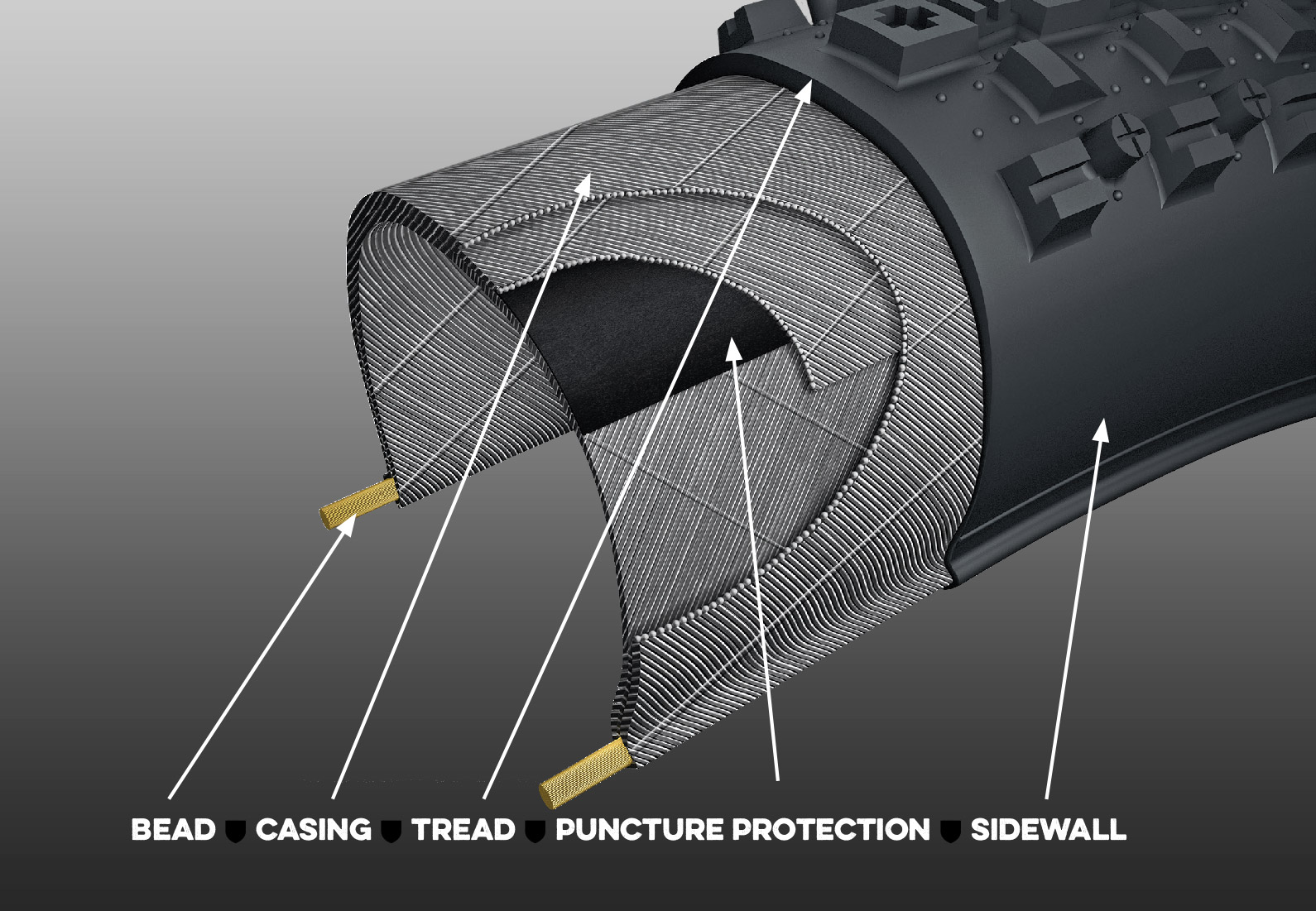
The casing is supple cloth material that arches from bead to bead and is what gives a tire its shape and primary ride characteristics. There are 2 main types of casings:
The sidewall of the casing is the part from the bead to the tread and is designed to support and dampen the tread. A more supple sidewall will provide more traction and smooth your ride, but can be prone to damage from trail obstacles. Thicker sidewalls with additional protection are heavier, but will hold up to rowdier conditions and harder charging.
Some tires include an extra layer between the tread and the casing (as shown in the cross section pictured above) to help prevent punctures either by being tough or simply by being thick. These extra layers are usually associated with higher rolling resistance.
The tread is the part of the tire that contacts the ground to provide traction and provides protection from casing wear. For mountain bikes these tend to be composed of knobs of varying height, shape, angle, and durometer (hardness) to provide specific ride characteristics while riding upright or in a corner. Knobbier tread provides more grip, but increases weight and rolling resistance.

The number of threads that cross through one square inch of a single ply of the tire’s casing. Lower TPI gives better puncture, cut and abrasion resistance but is heavier. Higher TPI conforms better to the terrain, offering a smoother, more comfortable ride while reducing the weight of the tire. Maxxis TPI ratings are the threads-per-inch of a single casing ply, as compared to some competitor TPI ratings.
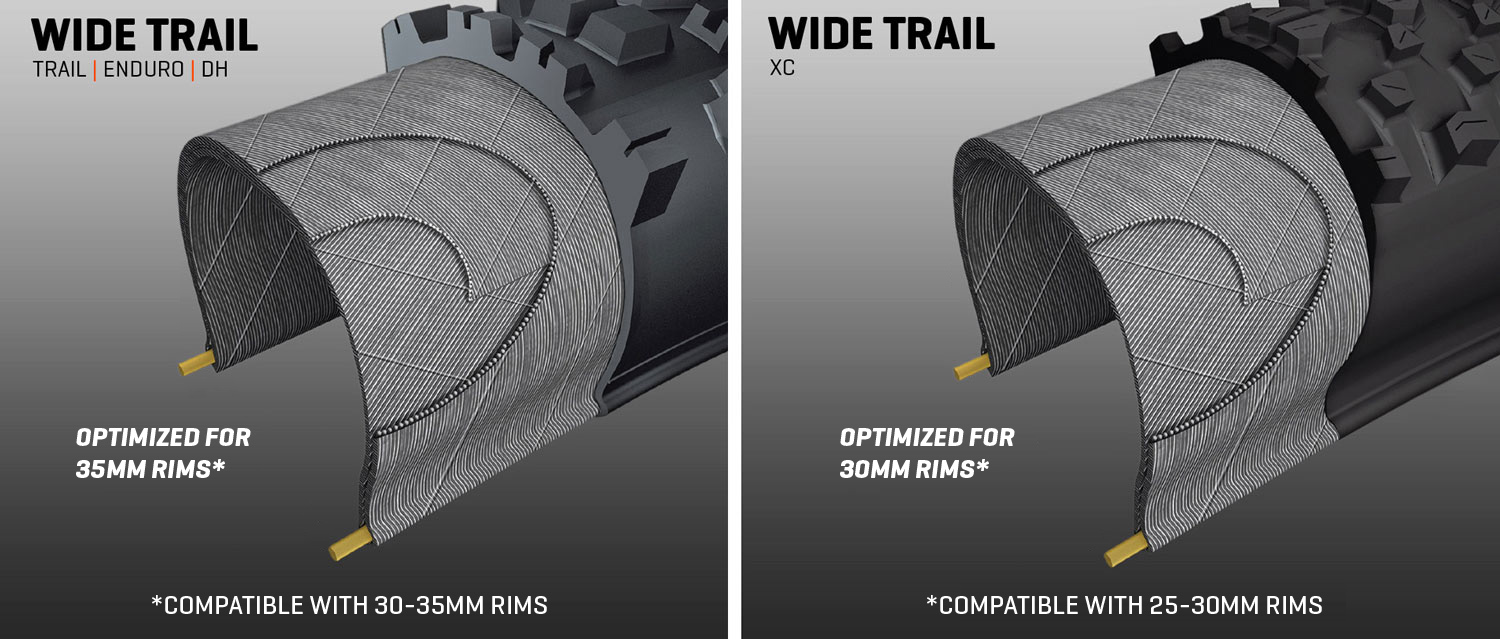
Wide Trail (WT) construction optimizes the tire’s tread layout and profile on today’s modern, wider rims. Traditional tires are designed around older, narrower rims and can create an overly square tire profile, leading to less than optimal performance. WT tires are optimized for a 35mm inner rim width but are proven to work over a range from 30-35mm inner rim widths, depending on the rider’s preference.
Wide rims are nothing new to trail, enduro, and downhill riders. At this point, the benefits are well understood. By running wide rims with a matching Wide Trail tire, riders can run lower tire pressures, which improves traction and comfort while decreasing rolling resistance.
Now that the trend toward wider rims has reached cross country bikes, Maxxis is offering new Wide Trail (WT) specs of the Aspen and Rekon Race tires. Maxxis Wide Trail XC tires are optimized for use with 30mm internal width rims, but they will perform well on rims as narrow as 25mm. Maxxis does not recommend rims wider than 30mm or narrower than 25mm
Tubeless downhill set-ups are a great way to shave some weight and spend more time in the bike park or shuttling hot laps on your local runs. Sealant-compatible rubber is used with the familiar Maxxis dual-ply 60 TPI downhill construction and butyl insert for support and rim protection in order to offer the benefits of increased grip and reliability. A Tubeless Ready bead securely locks to the rim and the foldable bead provides additional weight savings.

One of the most annoying things to deal with on a ride is having to stop to fix a flat. Luckily, tire manufacturers have been adding additional layers of special materials or rubbers to casings and sidewalls to help mitigate punctures from rocks, thorns, and pinch flats. These additional layers do make the tires heavier and add rolling resistance, but come with the benefits of additional sidewall support that allows you to run lower pressures and reduce the chance of a flat ending your ride. Not everyone will need the same level of puncture protection, so Maxxis has several different levels of protection, so you can put your money where it matters.
An extremely cut-resistant and abrasion-resistant material added to the sidewalls of select mountain tires. This densely woven fabric is also lightweight and highly flexible, ensuring that the performance of the tire remains unaffected. Choose EXO Protection for exceptionally rocky, treacherous trails where the chance of sidewall cuts and abrasions is high.
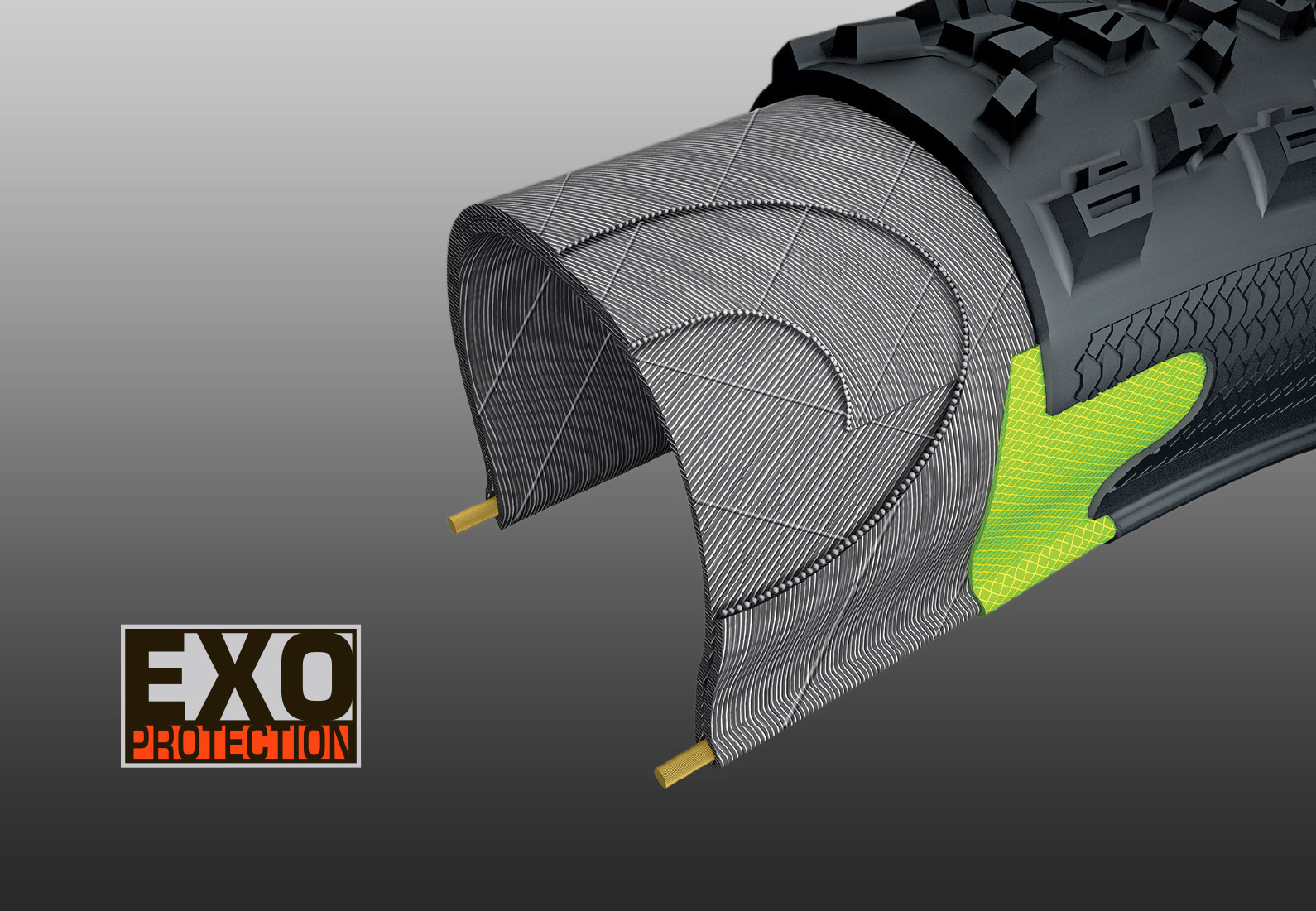
EXO+ is Maxxis’ medium-duty puncture protection option suitable for all-around trail riding and light weight e-bikes. We begin with a durable 60 TPI casing, add in our legendary EXO puncture protection layer in the sidewalls, and top it off with a small butyl insert around the bead. The tough casing and EXO material ward off damage from rocks and roots, while the butyl insert protects the tire from pinch flats and helps prevent rim damage.
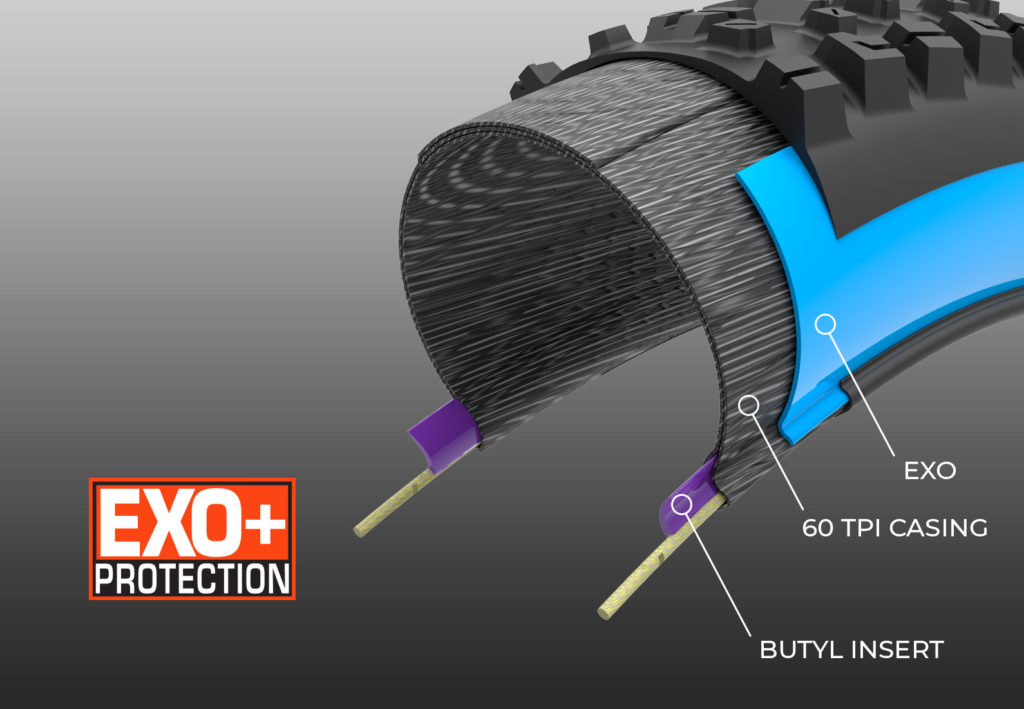
DoubleDown (DD) is the next step in the evolution of the dual-ply tire casing for enduro racing. Two 120 TPI casing layers reinforced with a butyl insert provide the enduro racer with the support and protection of a downhill tire, but in a lighter package.

The most important part of a tire is arguably the rubber compound within the tread. By changing the amounts of various components of the rubber formula, engineers can make two identical looking tires perform completely differently. Matching the types of compound combinations to your terrain and style will allow you to get the absolute most out of every run. A list of Maxxis compounds and their distinct characteristics is below.
A single compound tire is composed of one compound throughout the entire tread and, generally, is optimized for longevity and performance. Often these tires will have a middle-ground durometer (softness of the rubber) in order to have decent grip, wear characteristics, and rolling resistance. A grippy rubber tends to be less helpful than good tread knobs in loose conditions. These are ideal for DH and gravity settings where the harsh terrain tests the capability of the tire.
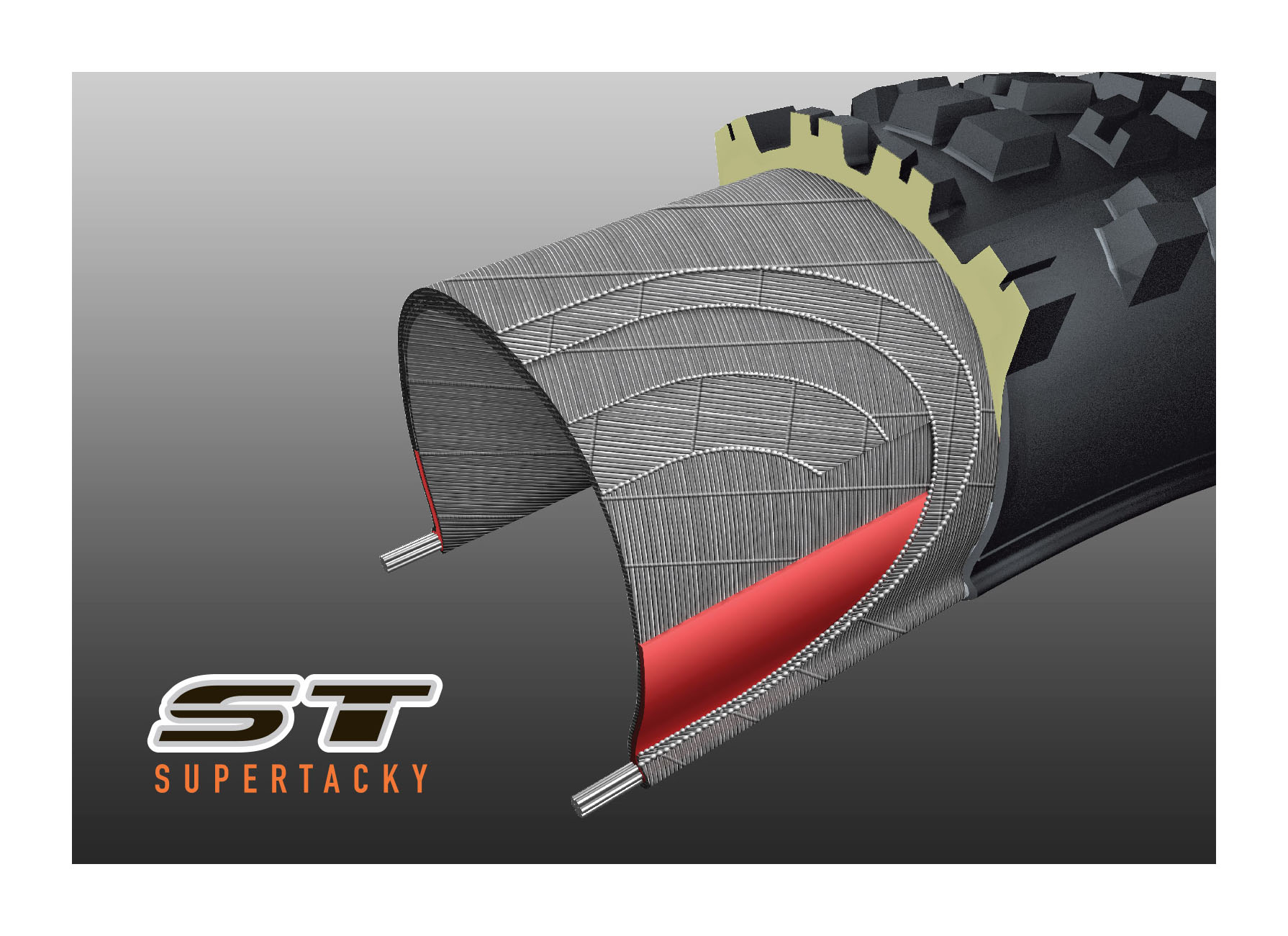
Maxxis's Super Tacky compound is a single compound that is specifically intended to provide utmost grip by using a special low-rebound, high-traction compound used in select mountain tires. These have an ultra-low durometer (42a) which means they will wear out more quickly but will keep you glued to the trail.
Maxxis offers the majority of their tires in both dual compound and triple compound (3C) options. Similar to the 3C tires, dual compound tires utilize different rubbers to draw out specifc traits like durability, grip, and reduced rolling resistance. By using a higher durometer (softeness) rubber in the base of the tread covered by a softer rubber, Maxxis can balance longer lasting tread that minimize rolling resistance from hysterisis while maintaining good grip. We often recommend a dual compound rear tire matched with one of the 3C tires in the front.
Maxxis 3C Triple Compounds are the pinnacle of Maxxis tire engineering. They use a harder, longer lasting base layer and two progressively softer top layers in order to optimize traction and stability. Maxxis offers three different configurations of their 3C Triple Compound mountain technology: MaxxSpeed, MaxxTerra and MaxxGrip. Keep reading below to learn more about each of these 3C layups and which is the right fit for your riding needs.
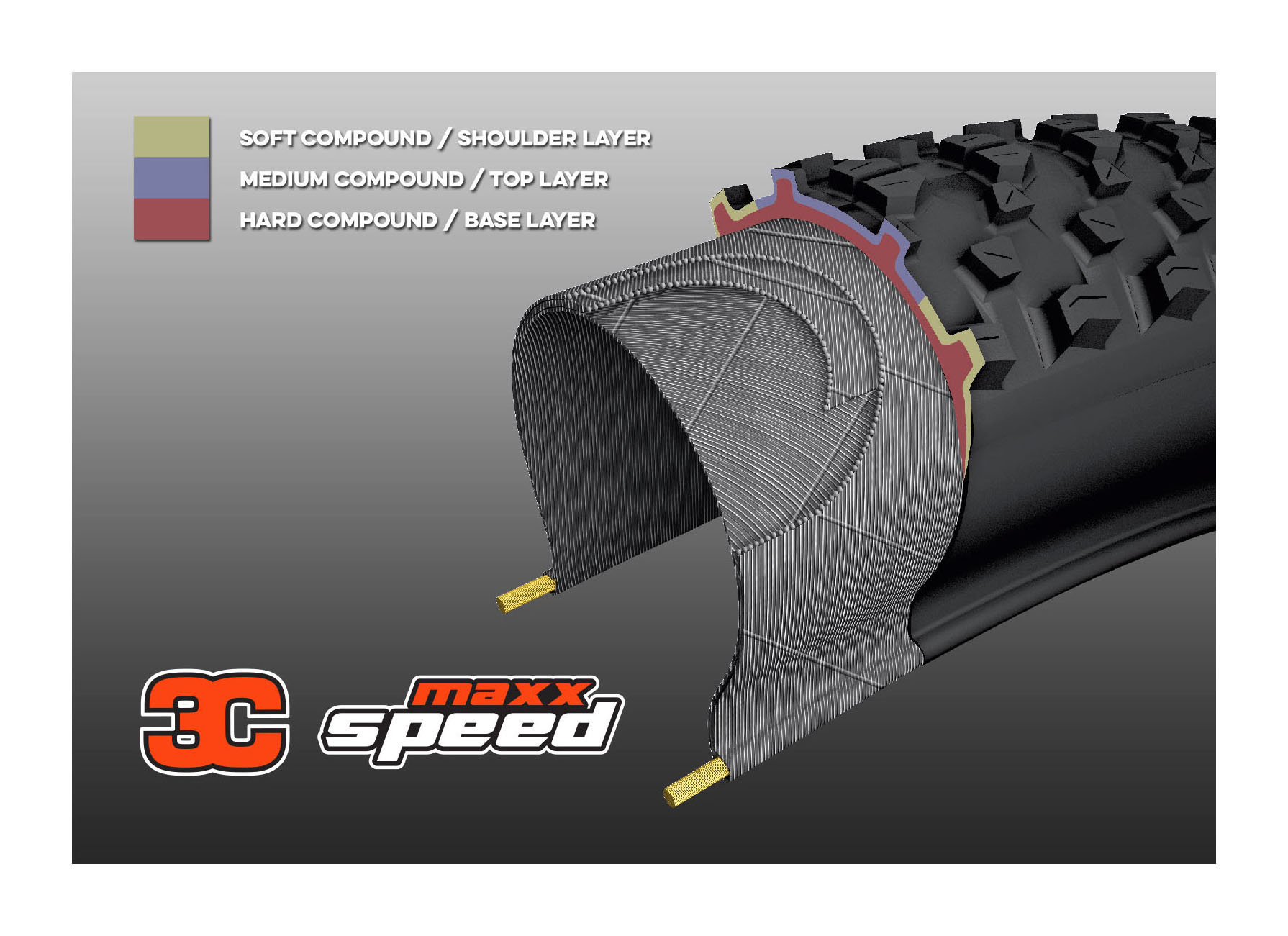
Used primarily in cross country and enduro tires, the two compounds in the outer layer are specially formulated to reduce rolling resistance and optimize treadwear and traction.
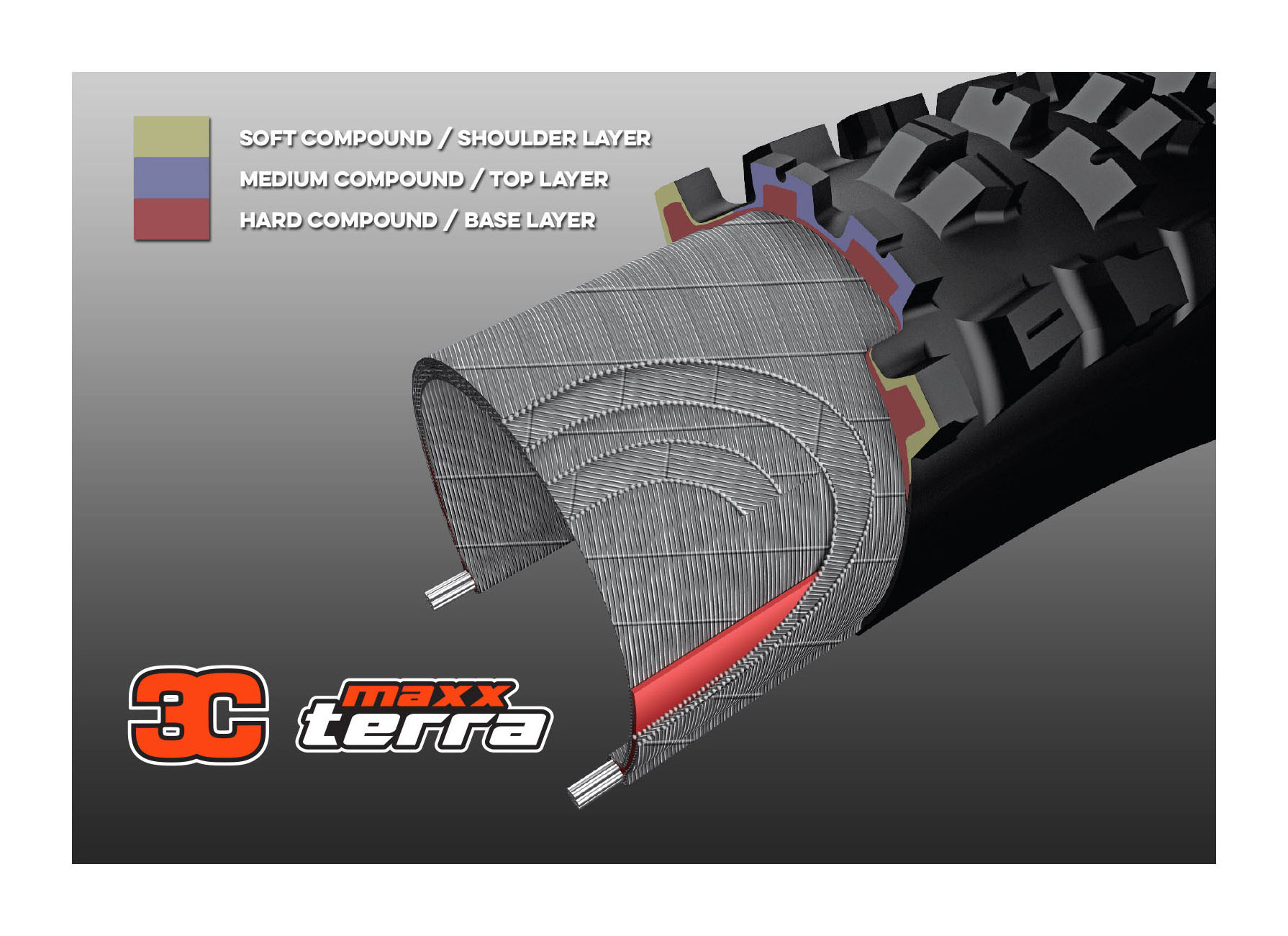
An intermediate compound configuration used in select mountain tires. 3C MaxxTerra is softer and offers more traction than 3C MaxxSpeed, yet provides better treadwear and less rolling resistance than MaxxGrip.
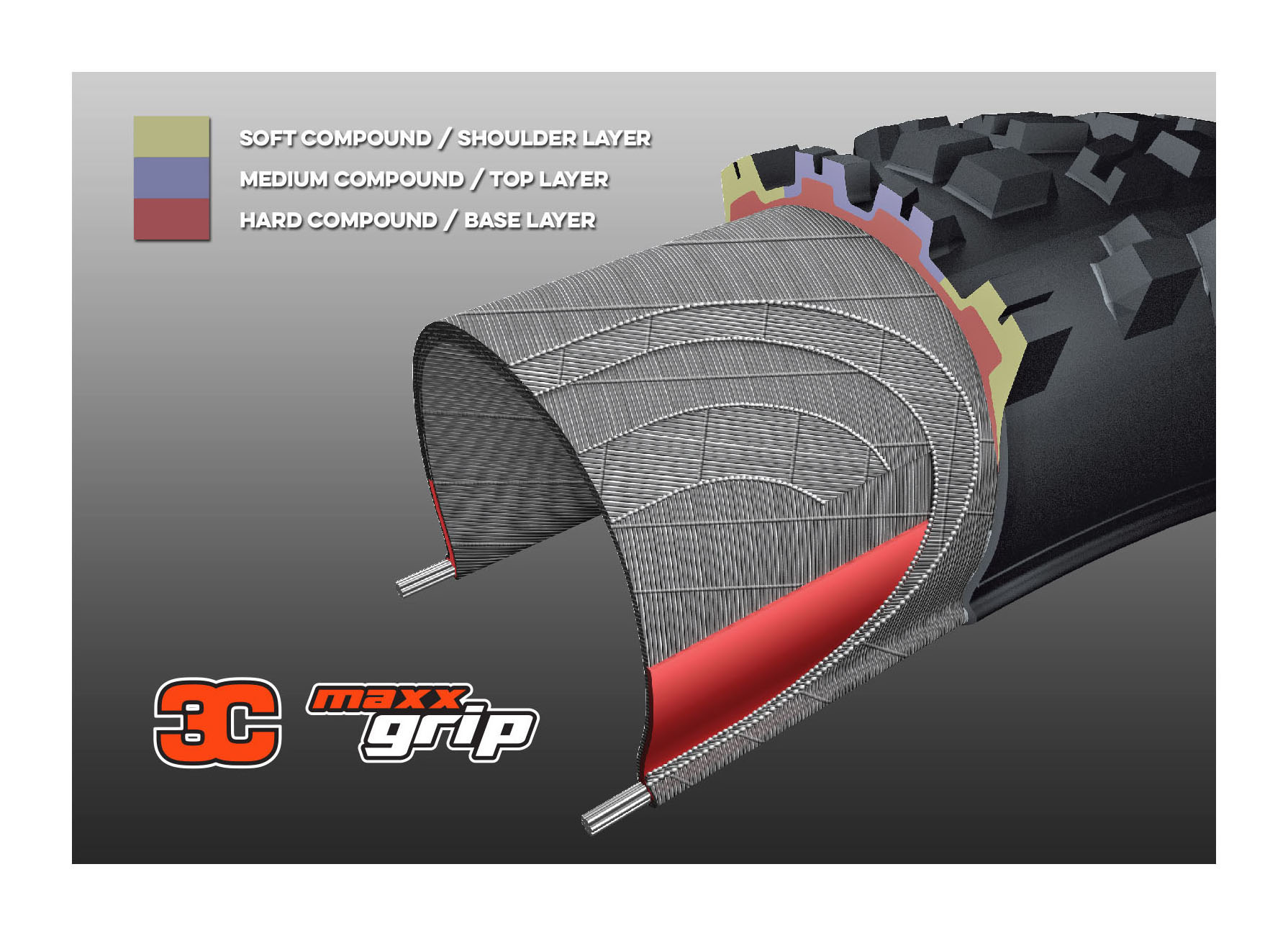
3C MaxxGrip uses the softest rubber compounds to offer the ultimate in grip and slow rebound properties for unparalleled traction in downhill applications.

Cross-country riding is all about being lightweight, fast and agile, and XC tires are built to match this focus. These tires tend to forego extra protection, additional layers and larger knobs to ensure a lightweight carcass with low rolling resistance.
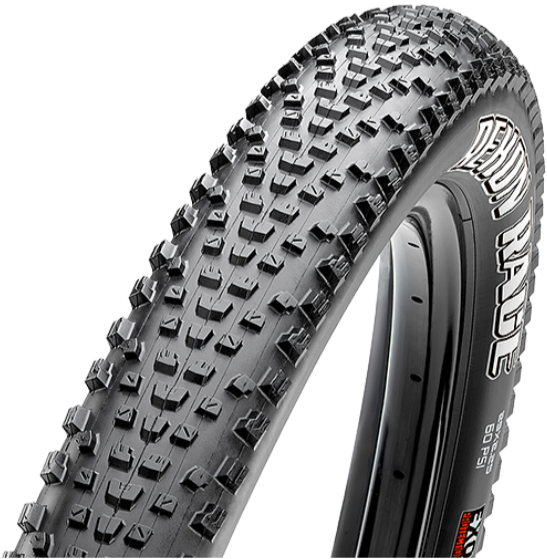
HARD PACK
Semi-slick XC race tire
The latest in Maxxis's long line of World Cup-winning XC tires is the new Rekon Race! This semi-slick tire borrows its tread design from the trail version of the Rekon, but with smaller and shorter knobs. Use it as a rear tire paired with a more aggressive front tread, or front and rear for short track racing.

HARD PACK | LOOSE OVER HARD | MEDIUM
Pick up the Pace! The Pace was designed to meet the needs of World Cup XC racers.
A high-volume, low-profile tread design offers minimal rolling resistance and consistent traction across the profile of the tire. Continuous side knobs keep you planted where traction is critical, and the single compound balances traction and tread wear. The Pace is available in all three wheel sizes.
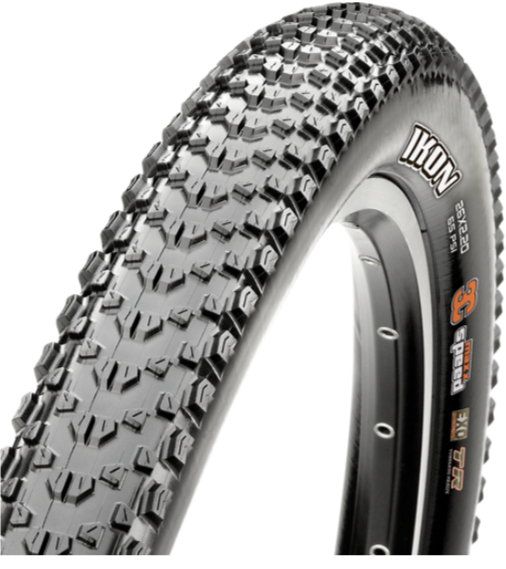
HARD PACK | LOOSE | LOOSE OVER HARD | MEDIUM
Maxxis's most versatile XC tread
The Ikon is for true racers looking for a true lightweight race tire. With 3C Triple Compound Technology, high-volume casing and a fast rolling tread design, the Ikon provides exemplary performance in all riding conditions. As its name suggests, the Ikon represents all that is true in racing.
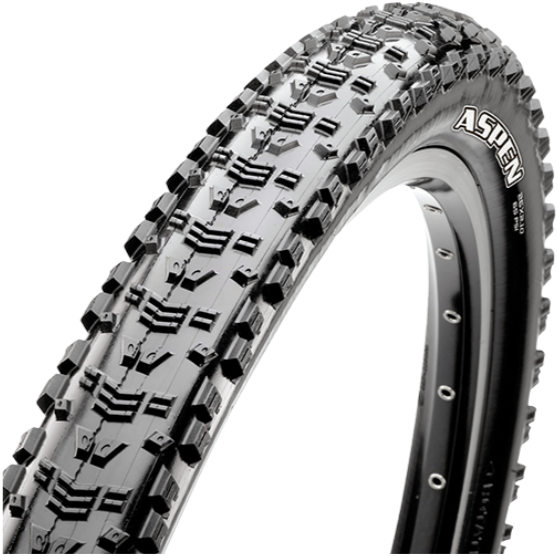
HARD PACK | LOOSE OVER HARD | MEDIUM
High-volume casing, low-profile tread
Maxxis has done it again with its latest XC race tire. The new Maxxis Aspen pushes the limits of a lightweight XC tire designed to have minimal rolling resistance. The Aspen is designed with a high-volume casing to smooth out the roughest roots and rocks, while the dual compounds give optimal traction in the corners. So if crossing the finish line first is your top priority, then the Aspen was designed for you.
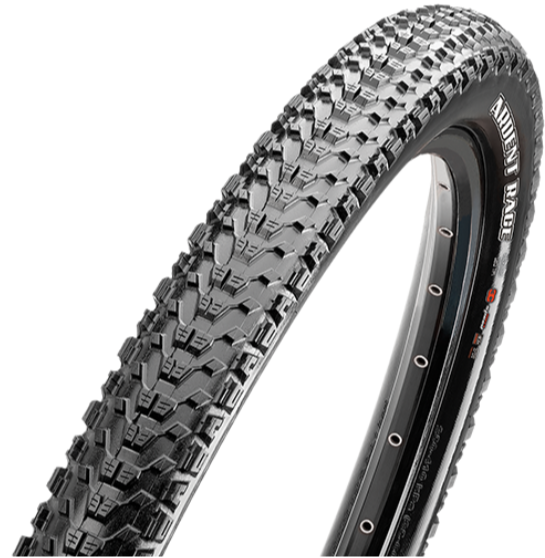
HARD PACK | LOOSE | LOOSE OVER HARD | MEDIUM
Bridging the gap
The Ardent Race tire from Maxxis is ideally suited for technical XC race courses and endurance-length events. With its medium-height tread, the Ardent Race bridges the gap between the XC-oriented Ikon and the trail-oriented Ardent. The center knobs are ramped to reduce rolling resistance, and the side knobs are angled and stepped to provide great biting traction in corners. Choose the Ardent Race for your next demanding XC race or epic trail ride.
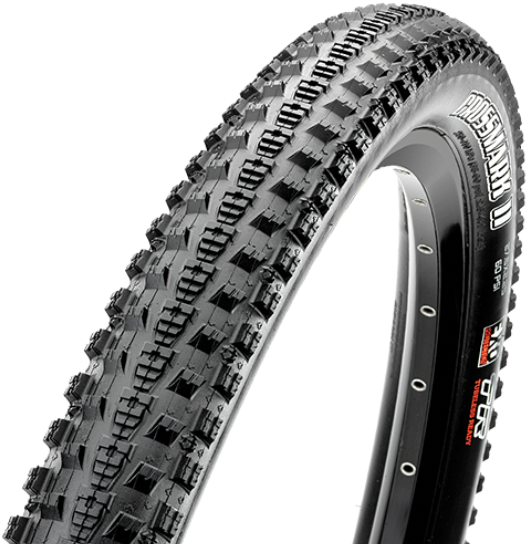
HARD PACK | LOOSE OVER HARD | MEDIUM
Designed for speed, revised for control
The CrossMark II improves on the speed of its predecessor while improving grip in intermediate conditions. The legendary center ridge still flies on hardpack, and the updated tread pattern provides better braking and cornering over a wide range of trail conditions. A great choice if you want to go fast everywhere.
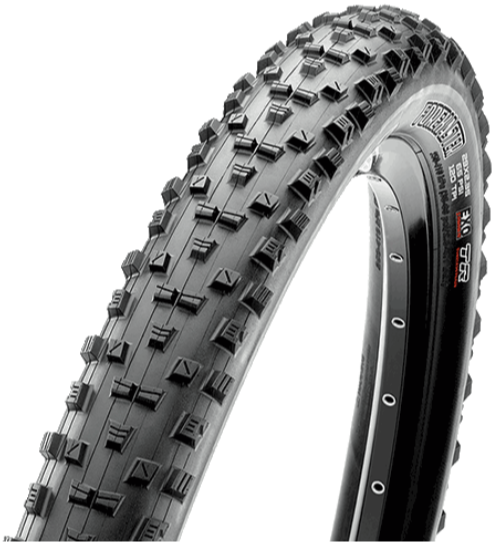
LOOSE | LOOSE OVER HARD | MEDIUM | MUD | WET
With the Forekaster on your bike, you can forget about the weather and hit the trails.
With the Forekaster on your bike, you can forget about the weather and hit the trails. Mid-height tread blocks are spaced evenly to allow penetration through loose trail conditions and openly for better mud-clearing compared to other race tires. Wide cupped knobs down the middle provide excellent braking on the sloppiest singletrack. When the leaves start falling and the weather becomes more unpredictable, the Forekaster is the late-season tire of choice.
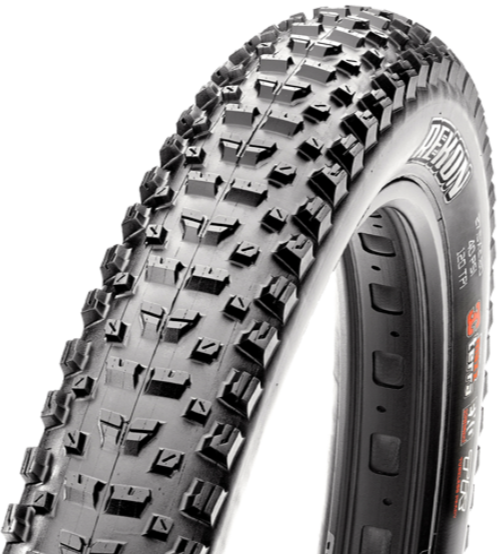
HARD PACK | LOOSE | LOOSE OVER HARD | MEDIUM
The Rekon is an aggressive trail tire inspired by the Ikon
The Rekon is an aggressive trail tire inspired by the Ikon for intermediate and technical terrain. Wide knobs down the middle provide control under braking and L-shaped side knobs assure support when carving loose turns. With confidence like this you can race more and scout less with the Rekon.

Most mountain bike riders will find themselves looking for tires from this category. These tires look to balance the benefits of light weight, low rolling resistant tires with more aggressive knobs and extra protection. Like this style of riding, these tires are aimed at being good in most conditions and terrain. On the enduro end of this spectrum, many of these tires will share the same tread patterns of their DH siblings with just a bit less protection and weight.
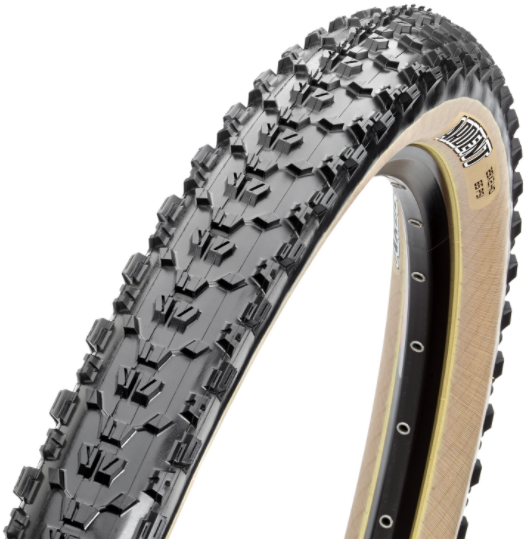
HARD PACK | LOOSE | LOOSE OVER HARD | MEDIUM | WET
The do-it-all trail tire
An aggressive tread in high-volume casing, designed with great traction in mind. The Ardent doesn't forget the racer with large block-style side knobs offering numerous edges for high-speed cornering. The center tread, while ideal for braking and accelerating traction, also features ramped knobs to minimize rolling resistance. With a wide variety of size offerings, the Ardent captures every mountain rider's needs.
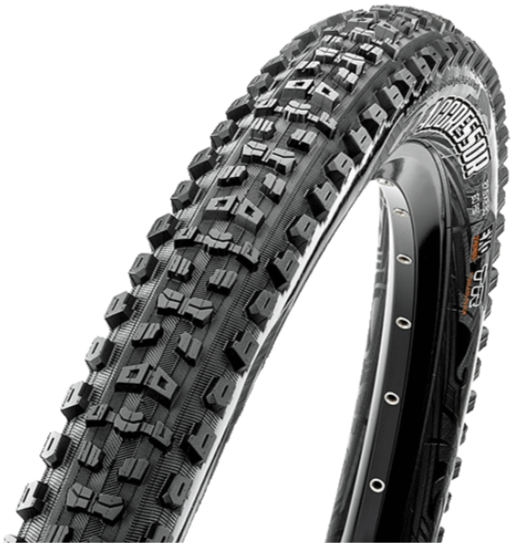
LOOSE | LOOSE OVER HARD | MEDIUM
The new standard in enduro tires
The Aggressor is designed for high-speed modern mountain bike trails. Advanced knob shaping creates extra gripping edges, and reinforced side knobs offer enhanced stability when cornering at speed. An all-around trail tire excelling on everything from loose cross country race courses to heavy all-mountain riding.
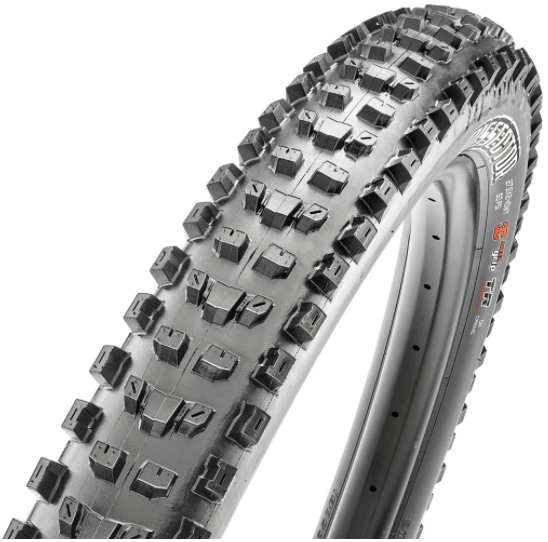
HARD PACK | LOOSE | LOOSE OVER HARD | MEDIUM
Troy Brosnan's go-fast signature tire.
Designed in conjunction with Aussie DH racer Troy Brosnan, the Dissector seeks to minimize drag while retaining cornering control. This versatile tire can be used as a front, a pair, or as a rear depending on trail conditions.
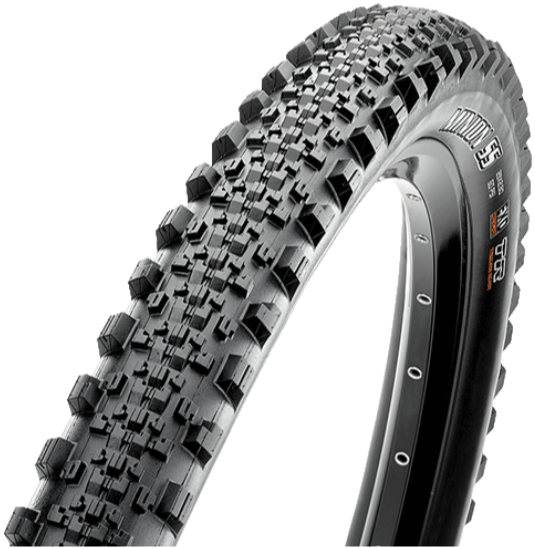
HARD PACK | LOOSE OVER HARD | MEDIUM
A semi-slick with dependable Minion cornering capabilities
The Minion SS fills the gap between a fast rolling XC tire and a grippy DH tire by including a cluster of short, ramped knobs, flanked by the much-loved Minion side knobs. This combination creates a fast-rolling tire with a square profile that hooks up in loose terrain. Perfect for summer shredding. The Minion SS is available in trail, enduro, and downhill specs.

Enduro, park, and freeride bikes have blurred the lines between trail and gravity riding. A DH bike is still the best tool for true gravity lines but many modern bikes are taking on downhill trails while still being able to pedal to the top. For riders of these bikes, choosing a balance of durability, protection, grip, and weight will be dependent upon how much pedaling they'll be doing and how gnarly the terrain is. Protection and predictable grip tends to win out over light weights and low rolling resistance.
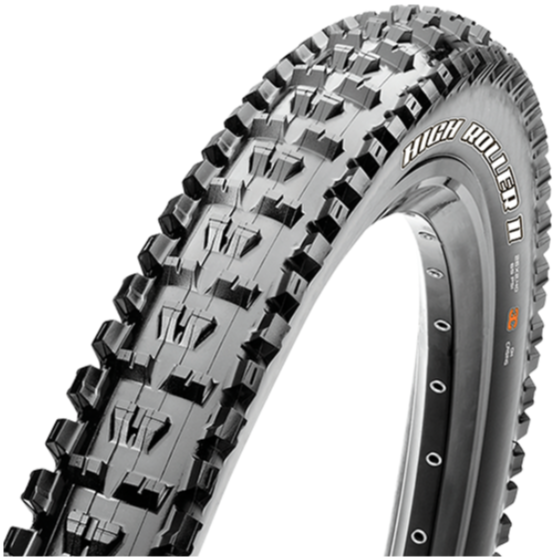
LOOSE | LOOSE OVER HARD | MEDIUM | WET
The second generation of the legendary High Roller
An open and aggressive tread design gives the High Roller II excellent soil penetration and mud-clearing ability. A square profile provides a solid, consistent feel across the knobs. Modified knobs on the shoulder and center improve braking performance and traction on hard surfaces. An excellent choice for technical, loose terrain. The High Roller II is available in trail, enduro, and downhill specs.
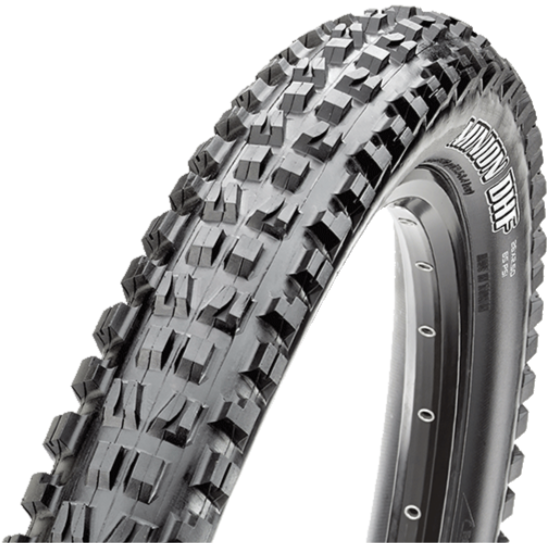
LOOSE | LOOSE OVER HARD | MEDIUM | WET
The standard by which all tires are judged
With a tread design that deftly balances rolling speed with braking and cornering traction, it's hard to find fault with the Minion DHF. That's probably why it's one of the most imitated tires in mountain biking. Whether riding local trails, a backcountry epic, racing enduro or World Cup downhill, there's a Minion DHF spec to meet your needs. The Minion DHF is available in trail, enduro, and downhill specs.
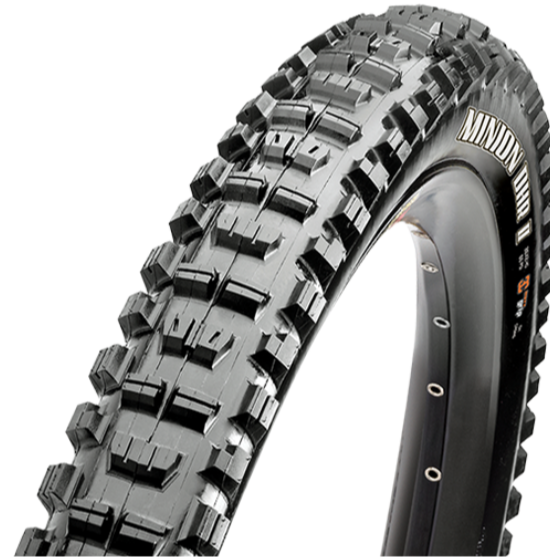
LOOSE | LOOSE OVER HARD | MEDIUM | WET
Refined and redesigned; ready to shred any line
With side knobs borrowed from the legendary Minion DHF, but widened to provide more support, the DHR II corners like no other. The center tread features ramped leading edges to improve acceleration and sipes to create a smooth transition when leaning the bike. Paddle-like knobs on the center tread dig in under hard braking and help keep the bike under control. Pair it with a Minion DHF up front for the ultimate aggressive trail riding tire combo! The Minion DHF is available in trail, enduro, and downhill specs.

LOOSE | LOOSE OVER HARD | MEDIUM | WET
World Cup Champion Greg Minnaar's signature tire.
The Maxxis Assegai tire is named after the iron-tipped spear used by the Zulu people of South Africa. Greg Minnaar, a native of South Africa, thought it was a fitting name for a tire ready to do battle on the mountain. The tall knobs punch through dust and loam to find traction, but also offer support and confidence on wet roots and rocks. While other tires excel only in certain conditions, the new Maxxis Assegai is built to go fast everywhere.
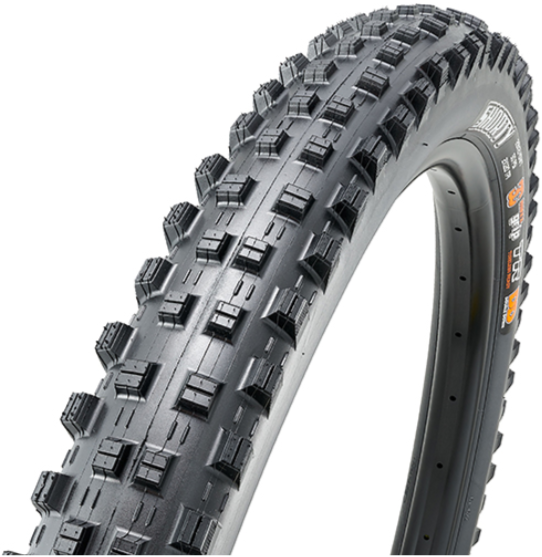
LOOSE | MUD | WET
A versatile mid-spike tire for dust, loam, and mud
After gathering years of data and feedback from Maxxis World Cup Downhill and Enduro World Series athletes, the Shorty is completely new for 2021. The knob layout has been altered to improve wet traction, cornering performance, and mud shedding abilities. The narrower 2.40" casing improves frame and fork clearance for when things get really sloppy and reduces weight.
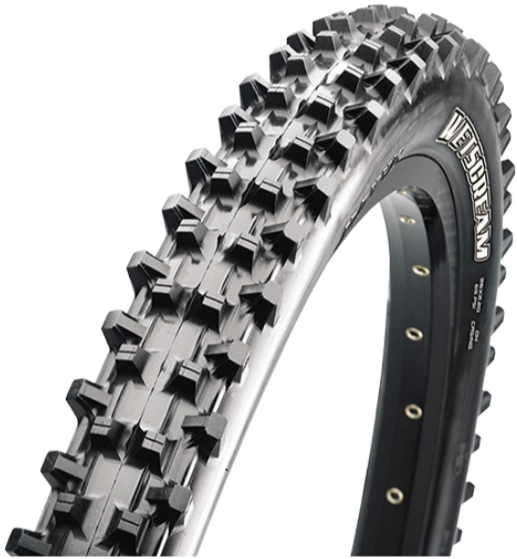
MUD | WET
A mud-spike for DH racing in the worst conditions
Designed for the muddiest downhill racecourse in the world: Les Gets France. Not for your local trail, the WetScream is intended for competition use only on professionally maintained courses. When the course turns ugly, trust the WetScream to carry you to victory.
We get it! There are a dizzying number of treads, casings, puncture protection tech, and tire widths to choose from, not to mention all the different options from great tire brands. Luckily, we got you covered. Our employees spend a lot of time getting to know the vast array of tires that we offer and can give you personal knowledge, let you know what other customers have liked, and the lowdown on the latest and greatest tire tech that's coming from our brand partners, so you can find exactly what you need.
Follow Jensonusa